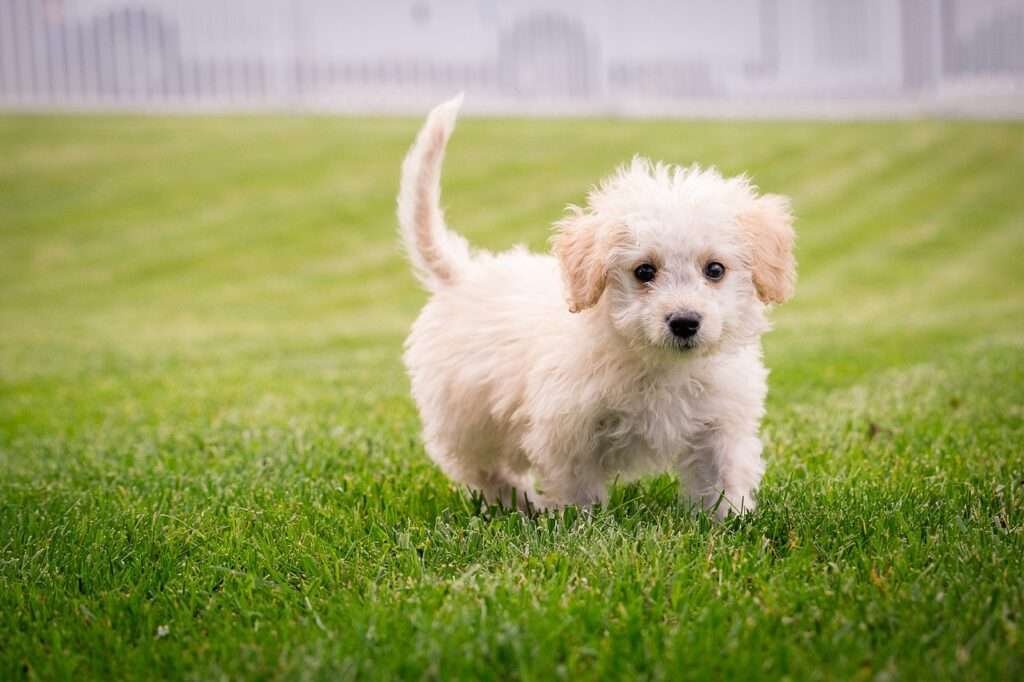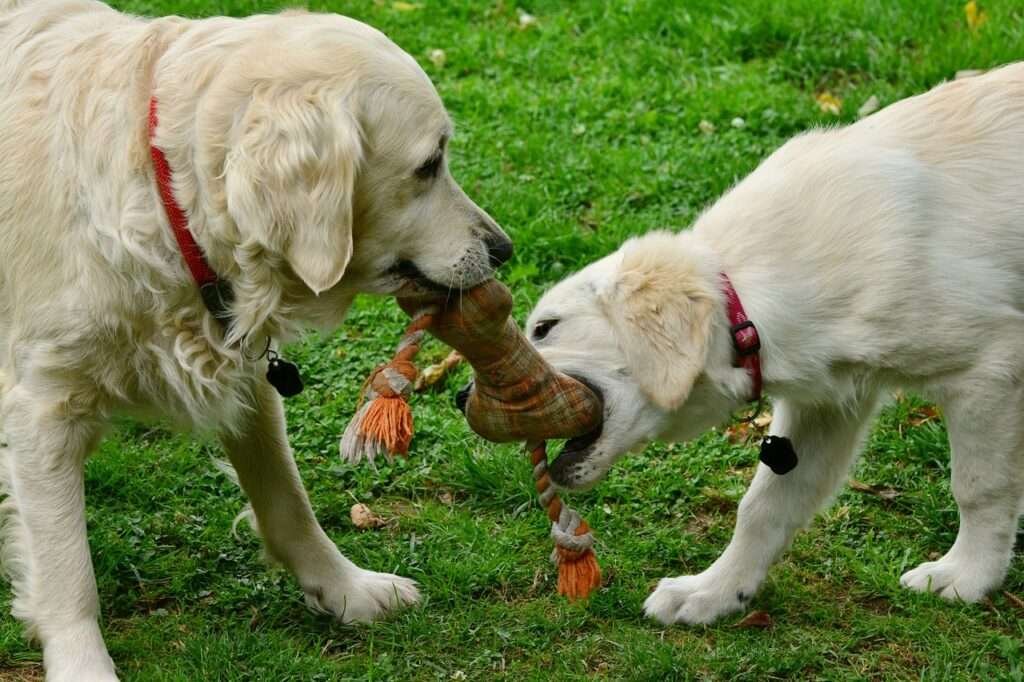Table of Contents
ToggleDo Dogs Dream, and What Do They Dream About?
Have you ever observed your sleeping dog and noticed its twitching or perhaps its whining, with its eyes moving back and forth under its lids? When witnessing this behavior, one can reasonably infer that their dog is dreaming. My dog often dreams, and I find it very fascinating that even dogs dream like us. I went through the rabbit hole to know more.
Dreams have fascinated philosophers for thousands of years, but only recently have dreams been subjected to empirical research and scientific study. Observing a sleeping dog might reveal twitches, whimpers, or even quiet barks, leading many dog owners to wonder what their furry friends are experiencing in their dreams. This article explores the fascinating world of canine dreams, delving into what dogs dream about, the reasons behind their nocturnal behaviors, and their connection to us.

What is a Dream?
First, let’s start by answering a basic question: What is a dream? A dream can include any of the images, thoughts, and emotions that are experienced during sleep. Dreams can be extraordinarily vivid or very vague; filled with joyful emotions or frightening images; focused and understandable or unclear and confusing. The fact that researchers do not yet understand the purpose of dreams may seem baffling. However, it is important to consider that science is still unraveling the exact purpose and function of sleep itself. Some researchers suggest that dreams serve no real purpose, while others believe that dreaming is essential to mental, emotional, and physical well-being.
What Do Dogs Dream About?
What exactly are our dogs dreaming about? Is it chasing squirrels, catching a frisbee, or possibly experiencing a nightmare? Unfortunately, since we can’t ask dogs about their dreams, the exact content remains a mystery. While many theories have been proposed, no consensus has emerged. Researchers suggest that even the simplest vertebrates, like common fruit flies, experience dreams. Just like humans, dogs go through various stages of sleep, including Rapid Eye Movement (REM) sleep, which is when dreaming occurs. During REM sleep, dogs’ brains are highly active, similar to when they are awake. This stage is characterized by quick eye movements, increased brain activity, and a relaxed body.
Moreover, dogs dream about their daily activities, as demonstrated in studies where researchers disabled a portion of the brainstem responsible for muscle paralysis during sleep. Dogs would then act out the activities they were dreaming of, such as running or playing, indicating they dream about their daily routines. Essentially, their dreams are a reflection of their waking life, capturing the sights, sounds, and experiences they encounter during the day.

What Do Dogs Dream About When They Cry?
It is not uncommon to hear a dog whimper or cry softly while sleeping. These vocalizations might indicate that the dog is experiencing an emotional dream. Crying in dogs’ dreams can be a response to various situations, such as separation from their owners, past traumatic experiences, or encounters with other animals. For instance, a dog that had a stressful day or experienced something negative might relive that event in their dreams, causing them to cry out. It’s a way for the brain to process emotions and events, much like how humans might have a bad dream after a tough day. However, it’s also possible that dogs cry in their sleep due to happy or exciting dreams, reflecting a high level of emotional engagement in their dream state.

Do Dogs Dream About Their Owners?
Dogs can also dream about interactions with their owners, reflecting their close bond. Dogs are social animals that form deep connections with their owners, and these relationships play a significant role in their lives. When dogs dream about their owners, they might be replaying moments of affection, such as being petted, going for walks, playing, or simply being close to their favorite person. Dogs rely on their owners for comfort, food, and companionship, so it’s natural for them to dream about their daily interactions. These dreams can help reinforce the bond between dogs and their owners, making dogs feel secure and happy even while they sleep.
What Do Dogs Dream About When They Bark?
Hearing a dog bark while they are asleep can be amusing and intriguing. The main reason dogs bark in their sleep is easy to explain: they’re dreaming! Barking in dreams can be linked to activities that typically make them bark when awake, such as chasing after squirrels, protecting their territory, or playing with other dogs. This vocalization is part of the brain’s way of processing and rehearsing behaviors. Essentially, if a dog is barking in its sleep, it might be reliving an energetic or intense moment from its waking hours. This can include interactions with people, animals, or even responding to noises and movements in their environment.
What Do Dogs Dream About When They Twitch?
Dogs and humans share similarities in sleep cycles, although canine cycles are shorter and more frequent. While a dog’s sleep position doesn’t determine dream content, it may influence their movements during sleep and reflect their mental state. Different sleep positions, such as curling up or sleeping on their back, reveal aspects of a dog’s feelings and may influence dream activity. Concerns about seizures versus dreaming arise when dogs exhibit excessive twitching during sleep. However, differences in behavior upon waking can help distinguish between the two. When a dog twitches, it’s often a sign that they are immersed in an active dream, possibly chasing a ball, running through a park, or engaging in playful behavior with other dogs. The twitching occurs because, during REM sleep, the brain sends signals to the muscles, causing these small movements. It’s a normal part of the sleep cycle and indicates that the dog’s brain is healthy and actively processing information.

Why Do Dogs Dream So Much?
Dogs spend a significant amount of time sleeping, often more than humans. Puppies and older dogs, in particular, tend to sleep for longer periods, which means they also spend more time dreaming. There are several reasons why dogs dream so much:
- Processing Information: Like humans, dogs use dreams to process and organize information. This helps them make sense of their experiences and learn from them.
- Emotional Well-being: Dreaming can contribute to a dog’s emotional health. By working through emotions and events in their dreams, dogs can manage stress and anxiety, leading to a more balanced state of mind.
- Development and Learning: For puppies, dreaming plays a crucial role in development. Dreaming helps young dogs practice and refine skills they are learning, such as hunting, social interactions, and navigating their environment.
- Brain Health: Regular dreaming is a sign of a healthy brain. It shows that the dog’s brain is functioning well, maintaining cognitive processes, and ensuring overall well-being.
To ensure optimal sleep quality for dogs, providing a comfortable sleeping area, controlling temperature, and limiting pre-bedtime activities are essential. Adequate exercise during the day promotes restful sleep, while monitoring water intake before bed can minimize nighttime disruptions. Ultimately, understanding a dog’s sleep patterns and behaviors can contribute to their overall well-being and quality of life.
Can Dogs Have Nightmares?
While humans have more complex dreams and even nightmares, like being found naked in public or sitting for an exam, dogs mostly have simpler dreams that revolve around us. Additionally, dogs can experience nightmares, similar to humans, which may manifest as excessive twitching or whimpering during sleep. Despite concerns, experts advise against waking dogs during nightmares, as sleep is essential for their well-being. When some dogs have bad dreams, they might act aggressively if woken up. This can be risky, especially for kids.
Understanding that dogs dream and what they might dream about opens a window into their inner world. These dreams reflect their daily activities, interactions, and emotions, much like human dreams. Whether they are crying, barking, or twitching, these behaviors provide insights into what dogs experience during their sleep.



